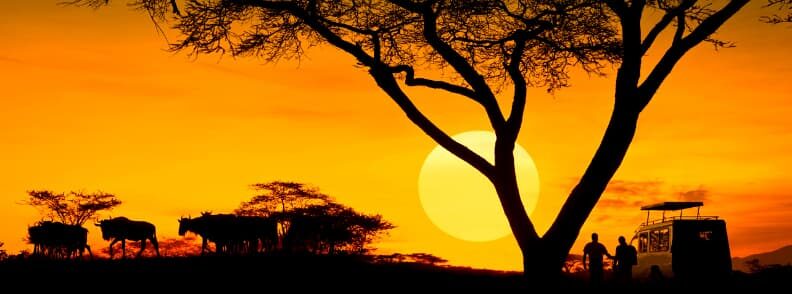Tanzania has an unrivaled natural richness as a wildlife safari destination. Wild creatures wander throughout large territories that have been declared national parks and wildlife reserves.
The Northern Circuit is a spectacular grouping of wildlife sanctuaries in the country’s north, close to the Kenyan border. This is Tanzania’s most popular and easily accessible wildlife safari route. I can confidently state that this is one of the best wild animal spotting places in the world! The places one can see on a Tanzania safari have a reputation for being uncrowded and unspoiled, and many visitors enjoy the amazingly diversified cluster of ecosystems and habitats.
Disclosure: Some of the links below are affiliate links. This means that at no extra cost to you, The Travel Bunny will earn a small commission if you click through and make a purchase. Thank you!
Why Tanzania safari tours are the best
Tanzania Northern Circuit’s stars are the Serengeti and Ngorongoro, both of which are very close to nature lovers’ hearts. The other components of the circuit, though, are no less dazzling and, in fact, complement the two: Arusha, Tarangire, and Lake Manyara.
The amount and diversity of species in this area are impossible to conceive. The Big Five – elephant, buffalo, rhino, leopard, and lion – are at the top of the list. Then there are numerous other wild animals: wildebeest, zebra, hartebeest, oryx, reedbuck, giraffe, Thompson gazelle, and plenty of others. And let’s not forget about the ruthless predators like the cheetah, wild dog, jackal, hyena, and vultures.
The Northern Circuit of Tanzania is also an ornithologist’s dream, with over 500 bird species recorded. On a Tanzania safari tour, you’ll see the terrible and intriguing dance of life and death that this mix of species performs on a regular basis.
Tanzania safari parks
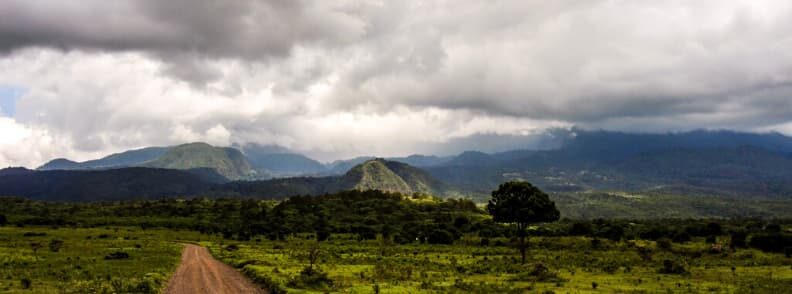
Arusha National Park
Arusha is frequently the starting point for a northern Tanzania safari. The hamlet is located near the base of Mount Meru, with views of Africa’s highest peak, Mount Kilimanjaro. The nearest protected spot to witness wild animals from Arusha is Arusha National Park, which is only 32 kilometers away.
The 137-square-kilometer Arusha National Park is home to baboons, colobus and vervet monkeys, duikers, elephants, buffalo, giraffes, hippopotami, leopards, hyenas, zebras, and a variety of antelopes. Over 400 bird species have been identified, including Eurasian migrants who come between October and April. Walking safaris in Tanzania are allowed, and you may step out of your vehicle for a nature walk, which is one of the park’s distinctive features.
The park is popular for day visits because of its proximity to the city of Arusha.
Aside from the wildlife, Arusha National Park is a treasure trove of environments, including grassland, montane forest, heath, alpine desert, soda, and freshwater lakes. The Momela Lakes, Mount Meru, and Ngurdoto Crater are three outstanding sights.
Mount Meru is Africa’s fourth-tallest peak, standing at 4,575 meters. It is, however, dwarfed by adjacent Kilimanjaro, which towers over it by more than 1,300 meters. It is unfortunate that many climbers disregard Mt Meru. The peak may be climbed in three to four days, including overnight stays in alpine cabins.
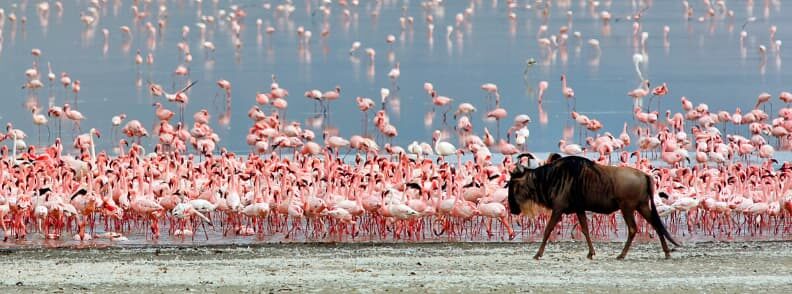
Ngorongoro Conservation Area
The Ngorongoro Conservation Area is a UNESCO World Heritage Site and an International Biosphere Reserve located in the Great Rift Valley, a massive crack in the earth’s crust. Volcanoes, mountains, plains, lakes, and forests abound throughout the region.
Its primary features are the Ngorongoro Crater, the Empakai Crater, the Oldonyo Lengai Mountain, and the archeological site of Olduvai Gorge, which covers an area of 8288 square kilometers. Dr. Louis Leakey found the fossils of Homo habilis (“Handy man”) in Olduvai Gorge, which experts believe to be mankind’s first step on the path of human evolution. During your Tanzania safari trip, stop here and take a look at the remnants of our illustrious forefather, whose heroic labor, fueled by necessity, saw him producing rudimentary stone tools.
The Maasai people, their cattle, and wild animals coexist within this conservation area, unlike in national parks.
The Ngorongoro Crater is the world’s biggest Caldera with unbroken walls. The crater floor drops 600 meters and covers an area of 260 square kilometers with a circumference of 19 kilometers. This spectacular natural amphitheater is a fascinating sight in its own right and one of the natural world’s wonders. The crater is home to a year-round permanent population of fauna. You will have little problem viewing lions, elephants, rhinos, buffalos, and other plains creatures like wildebeest, zebra, reedbuck, Thompson gazelle, and others. Watering holes dot the crater floor, which is home to about 30,000 wild creatures.
Ngorongoro is four hours by car or one hour by air from Arusha. And you’ll be on the road for two hours from either Lake Manyara or Tarangire.
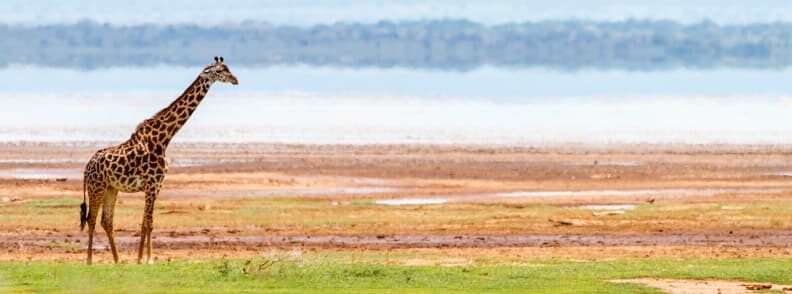
Lake Manyara National Park
Lake Manyara National Park is located between the Great Rift Valley cliffs and Lake Manyara, a small soda lake. The park encompasses 330 square kilometers, 70 percent of which is taken up by the lake. The diverse habitat, which includes groundwater forests, acacia woodland, and open grassland along the lakeshore, supports a diverse range of species, including the Big Five – lion, elephant, leopard, rhinoceros, and buffalo.
A Tanzania safari in Lake Manyara Park is notable for its elusive tree-climbing lions, who can be spotted on occasion in the acacia tree branches.
Baboons, impala, giraffe, zebra, wildebeest, ostrich, and hippo are among the other creatures found in the park. It is also an ornithologist’s paradise, with over 400 bird species. Pelicans, spoonbills, Egyptian geese, and hammerkops are among the water birds that frequent the lake. Furthermore, hundreds of thousands of migrating flamingos come, producing a beautiful spectacle over the soda lake.
You will arrive in Lake Manyara after a two-hour drive from Arusha or a half-hour flight.
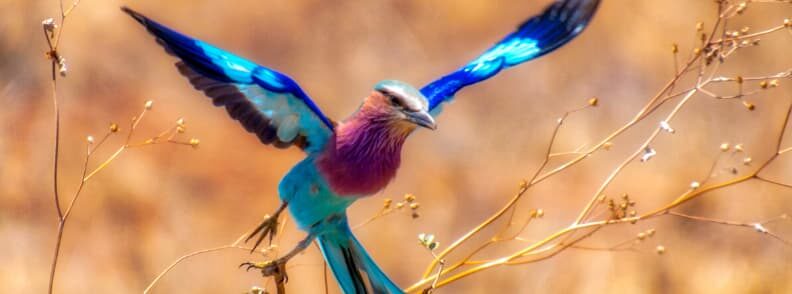
Tarangire National Park
Tarangire National Park is known for its huge baobab trees, undulating grassland, and acacia parks. It is famous for its abundant animal population, which is most visible during the dry season, which lasts from June to September. Thousands of species, including wildebeest, zebra, eland, hartebeest, waterbuck, giraffe, impala, gerenuk, buffalo, and oryx, migrate from the parched Maasai steppe to the Tarangire River in search of water at this time.
As is customary in the savanna, predators like lions, leopards, and others follow closely after. If you’re lucky, you could see a tree-climbing python, kudu, or roan antelope, which is an uncommon sighting on the northern Tanzania safari circuit. Birds are also plentiful, with over 550 species documented in the area.
Tarangire National Park is a one-and-a-half-hour journey from Arusha, making it a popular day-trip destination.
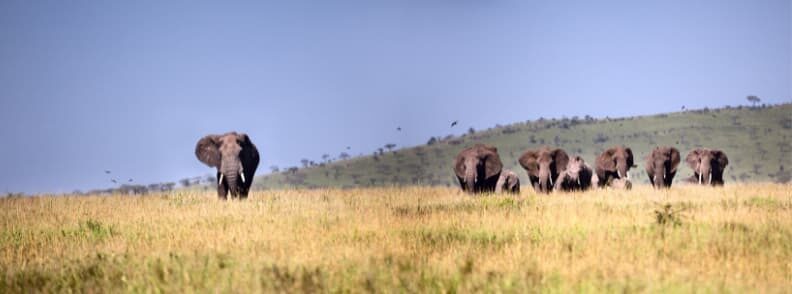
Serengeti National Park
The Serengeti National Park, Tanzania’s biggest national park, is Africa’s most famous animal refuge. It is located on a high plateau between the Ngorongoro Crater and the Kenya/Tanzania border, practically touching Lake Victoria in the west. The Maasai people dubbed it endless plains because it has short and long grass plains, acacia savanna, and forest in the north and east.
The Serengeti hosts 3 million big animals across an area of 15,000 square kilometers. There are about 35 species of animals here, including zebra, wildebeest, eland, giraffe, and the Big Five: elephant, lion, buffalo, leopard, and rhinoceros.
The Serengeti migration safari
The park serves as a staging area for one of nature’s most stunning displays, the yearly migration of wildebeest. This begins in June, when over one million wildebeest, zebra, and gazelle migrate to Kenya’s Maasai Mara in search of grazing. The predators of the savanna are close behind, including the lion, cheetah, wild dog, jackal, hyena, and vultures.
Viewing the migration from a hot air balloon is a spectacular experience if you have the money. From December through May, when the grass is short, is the ideal time to see the wildlife. Avoid late June to October, when most of the animals have migrated and are better viewed in Kenya’s nearby Maasai Mara. The expert ornithologist will have a field day attempting to identify the 500 bird species on record.
The Serengeti National Park is 6 hours by car or 1 hour by plane from Arusha.
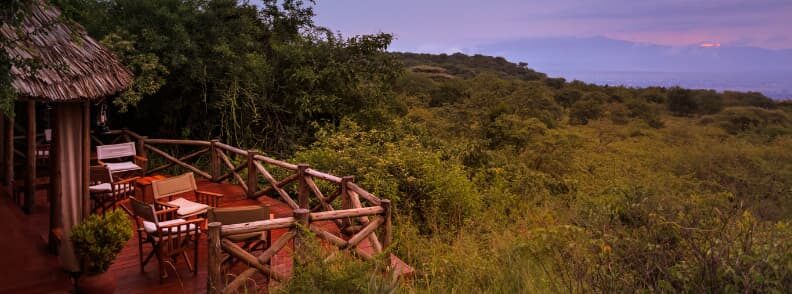
Where to stay during your Tanzania safari tour
Tanzania camping safari is available in the Ngorongoro Conservation Area and all of the northern circuit’s national parks. The facilities are rather modest, and budget guests like to spend their safari nights here.
If you can afford it, stay at one of the luxury Tanzania safari lodges or tented camps. Expect to discover all of the creature amenities associated with rated lodging in this category.
Find discounted Tanzania hotels and lodges in…
It is normally advised to choose an escorted tour package that includes transportation, a guide, park fees, and lodging. Tour guides are knowledgeable about the animals, where to locate them, and how to get to your destination.
However, if you are familiar with the land and have a strong understanding of animals, hiring a self-vehicle is a possibility.
When to go on Tanzania safari holidays
Northern Tanzania’s relatively high elevation ensures that it seldom gets overly hot. Evenings and early mornings may be fairly cool. You should bring a bulky sweater as well as a windbreaker or jacket.
Temperatures will range between 15°C in May and August and 22°C from December to March. The weather is ideal from June to September, but don’t expect to see any animals in the Serengeti during your Tanzania safari tour.
September through March is a wonderful period for a safari that includes all of northern Tanzania’s parks. However, keep in mind that some of the other parks in the area have practically year-round wildlife viewing chances.
Because the weather is at its worst in April and May, going on a Tanzania safari might prove difficult in these months.
What to wear on Tanzania safaris
Brightly colored apparel may get you in trouble with wildlife during your Tanzania African safari. Pack brown, beige, and khaki attire if you are savvy.
Men should wear short-sleeved shirts, shorts, and trousers. Short-sleeved shirts, slacks, and skirts are perfect for the ladies.
Though the northern region is far from the primarily Muslim coast districts and women are not required to dress conservatively, modest clothes are recommended.
Remember to carry sunglasses to protect yourself from the often strong tropical glare. And binoculars will be quite useful for spotting wildlife.

Mirela Letailleur is a Romanian travel blogger living in the South of France. She writes on The Travel Bunny travel blog about affordable travel in Europe. Creator of unique free travel guides and local travel expert. Problem solver. Wannabe coffee guru.
More articles to help you plan your Tanzania safari holiday
Chapwani Private Island: Uncover Zanzibar’s hidden gem
Romantic vacation in Tanzania: Pole Pole luxury eco-lodge hotel
Vacation to Africa – a travel guide for your first trip

